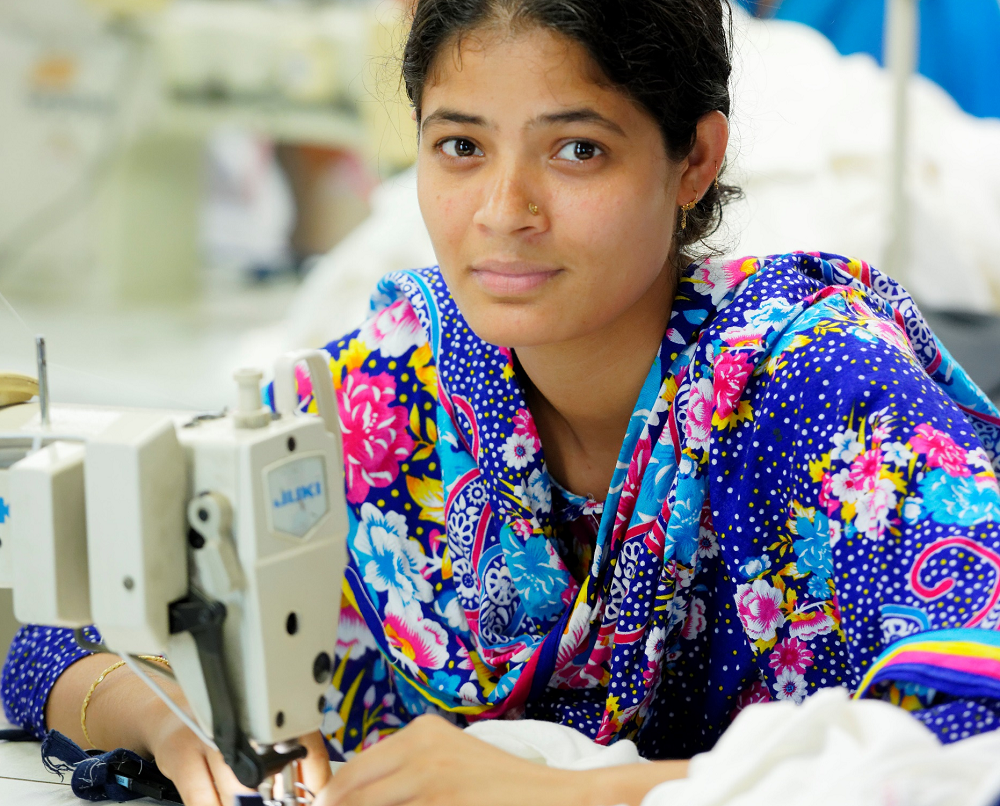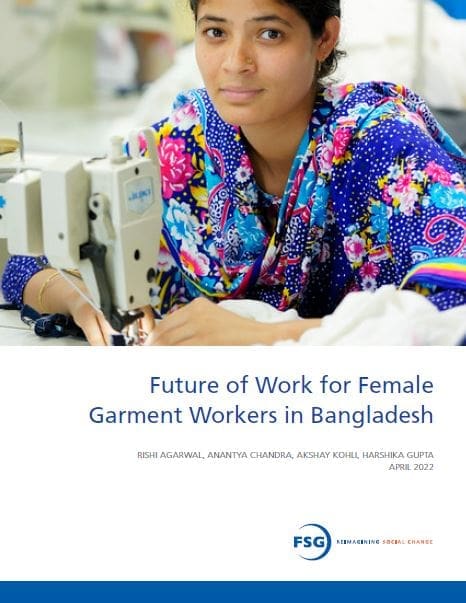Bangladesh’s ready-made garments (RMG) sector has played a critical role in its economic development, employing nearly 4 million people and contributing 14% to its GDP. As automation and digitalization revamp global apparel production, Bangladesh is at risk of losing competitiveness to other countries that offer greater product diversification and shorter lead times.
Women, a majority of Bangladesh’s RMG workforce, face a threat to their livelihoods in this context. They predominantly occupy junior and low-paid roles that are most vulnerable to automation and continue to suffer from skill and pay gaps. Prevalent gender norms limit their advancement, while sexual violence and harassment at work remain rampant.
The H&M Foundation is running a long-term collective impact initiative to prepare women garment workers in Bangladesh for the future of work. Since the underlying factors impacting them are uncertain and can change over the next few years, FSG undertook a scenario planning exercise to ensure that the interventions aimed at improving women’s employability are future-sensitive, both to the changes in the RMG industry globally (and Bangaldesh’s place in it), and the changes to women’s participation in the Bangladesh RMG industry.
Thus, we set out to understand the following key dimensions and developed reports detailing scenarios for:
- Alternate Futures for the RMG Industry in Bangladesh: How might the RMG industry in Bangladesh evolve by 2030?
- Future of Work for Female Garment Workers in Bangladesh: How might employment scenarios for Bangladesh’s women garment workers evolve by 2030?
Each report contains four distinct and plausible scenarios for the future of Bangladesh’s RMG industry and employment outcomes for its women workers, respectively. We have presented detailed narratives for each scenario to help identify opportunities and gaps. Lastly, for each potential scenario, we have shared key implications for stakeholders, including policy-makers, workers’ rights organizations, development organizations, skilling providers, RMG industry bodies, apparel buyers, and RMG suppliers.
“Scenario planning, which is still nascent in global fashion and philanthropy, is exactly the approach we need to be more effective in driving change. By stretching our thinking and being data-driven, scenario planning allows us to envision the multiple divergent and plausible futures in which our interventions might be operating, identify opportunities for impact, and ensure that we are appropriately prepared for these futures.” – Charlotte Brunnström, The H&M Foundation


